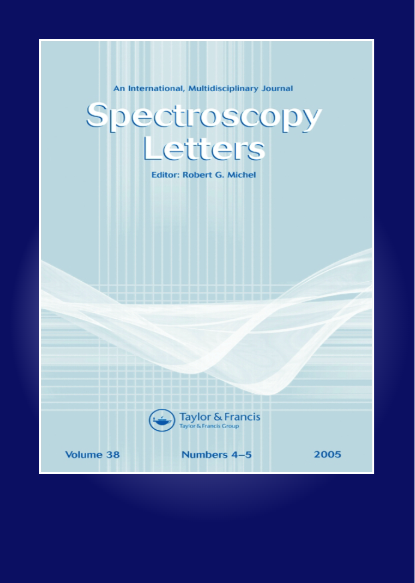晶体结构对韧致辐射铅、汞和钨K壳层结合能的影响
IF 1.6
4区 化学
Q3 SPECTROSCOPY
引用次数: 0
摘要
摘要采用一种新的方法首次测量了纯元素形式的铅、汞和钨及其某些化合物的K壳层结合能。该方法包括一个弱β源、一个外部韧致辐射转换器、元素和化合物靶,以及一个耦合到16K多通道分析仪的高分辨率、高纯度锗探测器。90Sr-90Y放射源的β粒子与铁箔相互作用产生的连续外部韧致辐射光子可以穿过铅、汞和钨的元素和化合物靶。用高分辨率高纯锗探测器光谱仪测量了透射外韧致辐射光子的光谱。透射光谱显示在靶的K壳层结合能下强度突然下降。这种突然下降是由于K壳层光电效应的开始,已被用于确定K壳层结合能。研究表明,由于铅、汞和钨原子的化学环境,K壳层结合能的变化归因于晶体结构。本文章由计算机程序翻译,如有差异,请以英文原文为准。
Effect of crystal structure on K shell binding energy of lead, mercury and tungsten using bremsstrahlung radiation
Abstract The K shell binding energies of lead, mercury, and tungsten in their pure elemental form and in some of their compounds have been measured for the first time by adopting a novel method. The method involves a weak beta source, an external bremsstrahlung converter, element and compound targets, and a high-resolution, high-purity germanium detector coupled to 16K multichannel analyzer. Continuous external bremsstrahlung photons produced by the interaction of beta particles from a 90Sr-90Y radioactive source with an iron foil are allowed to pass through the elemental and compound targets of lead, mercury, and tungsten. The spectrum of transmitted external bremsstrahlung photons is measured with a high-resolution high purity germanium detector spectrometer. The transmitted spectrum shows a sudden drop in intensity at K shell binding energy of the target. Such a sudden drop, which is due to the onset of the K shell photoelectric effect, has been used to determine the K shell binding energies. It has been investigated that the shifts in the K shell binding energies due to chemical environment of lead, mercury, and tungsten atoms is attributed to crystal structure.
求助全文
通过发布文献求助,成功后即可免费获取论文全文。
去求助
来源期刊

Spectroscopy Letters
物理-光谱学
CiteScore
2.90
自引率
5.90%
发文量
50
审稿时长
1.3 months
期刊介绍:
Spectroscopy Letters provides vital coverage of all types of spectroscopy across all the disciplines where they are used—including novel work in fundamental spectroscopy, applications, diagnostics and instrumentation. The audience is intended to be all practicing spectroscopists across all scientific (and some engineering) disciplines, including: physics, chemistry, biology, instrumentation science, and pharmaceutical science.
 求助内容:
求助内容: 应助结果提醒方式:
应助结果提醒方式:


